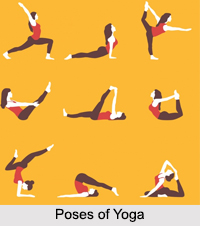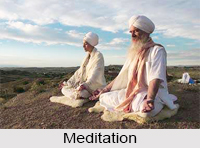 Yoga is integrally linked with the well being of human body. Though it is said that the final aim of yoga is to achieve Moksha or Nirvana, several yogic practices are instrumental in maintaining good health. Yoga is not only for the emancipation of the mind, but also for the steady health. The real comfort lies in good health and this is an essential component for happiness as well. Those who practise yoga as a daily ritual would experience great deal of peace and joy.
Yoga is integrally linked with the well being of human body. Though it is said that the final aim of yoga is to achieve Moksha or Nirvana, several yogic practices are instrumental in maintaining good health. Yoga is not only for the emancipation of the mind, but also for the steady health. The real comfort lies in good health and this is an essential component for happiness as well. Those who practise yoga as a daily ritual would experience great deal of peace and joy.
According to yoga, the body and mind is considered as one single composite unit. Similarly the structure of the human body and its function also, are treated as the two aspects of the same organism. Prana or life force is responsible for the various functions being carried out within the body. Another element is the Kundalini, the evolutionary energy. Through the yogic practices when it is stimulated, it is awakened and reaches to its highest possible spiritual potential. Awakening kundalini brings about spiritual enlightenment accompanied by significant psycho-physiological changes.
Yoga and Modern Science
 Yoga is essentially a spiritual discipline based on an extremely subtle science, which focuses on bringing harmony between mind and body. It is an art and science of healthy living. Yoga means not only yoga postures, but the whole science of redirecting energy inward and upward for Self-realization, especially meditation. To combat the diseases an individual can always resort to yoga as it has therapeutic value. It has the potential to tranquilise and balance the mind.
Yoga is essentially a spiritual discipline based on an extremely subtle science, which focuses on bringing harmony between mind and body. It is an art and science of healthy living. Yoga means not only yoga postures, but the whole science of redirecting energy inward and upward for Self-realization, especially meditation. To combat the diseases an individual can always resort to yoga as it has therapeutic value. It has the potential to tranquilise and balance the mind.
History of Yoga
The practice of Yoga is believed to have started with the very dawn of civilization. The sages carried this powerful yogic science to different parts of the world. Though Yoga was being practiced in the pre-Vedic period, the great Sage Patanjali systematized and codified the then existing practices of Yoga, its meaning and its related knowledge through "Patanjali Yoga Sutras". The main sources of information about Yoga practices and the related literature during this period, are available in Vedas, Upanishads, teachings of Buddhism, Jainism, Epics, Puranas, etc.
Pancha Kosha and Yoga
Pancha Kosha means the five different levels of existence and operation. A human being is said to exist, simultaneously, on the level of physical body, on the level of physiological-vegetative functions, on the level of emotion and memory, on the level of intellect and on the level of pure consciousness. Through the Yogic practices, such as, Asanas and Pranayama one becomes aware of these different koshas which, in turn, enables man to the correct understanding of one"s own nature. 
Impact of Yoga Asanas on the Human Body System
There are essentially 9 systems that are responsible for structure and function in the human body. The Skeletal system and the Muscular system are the principal systems responsible for the movement. The Nervous system and Endocrine system are involved in the organisation and control of the whole body. Respiratory system and Cardiac system are responsible for making the oxygen and nutrients available for the whole body. Digestive system and Excretory system are responsible for making the nutrients available for the body as well as for expelling out the unwanted waste matter from the body. Ultimately the Reproductive system concerns itself with the propagation of the species.
These systems in the human body are often affected by a number of diseases. In order to treat them and to keep the body hale and hearty, an individual can always resort to yoga. The yogic practices heal the body as well as the mind. Practicing yoga can cure, respiratory disorder, digestive disorders, increase blood circulation and ensure proper functioning of the heart. However, according to the different systems a particular yogic practice is suggested. Hence, it is safer to consult a yoga practitioner before initiating into this process.




















